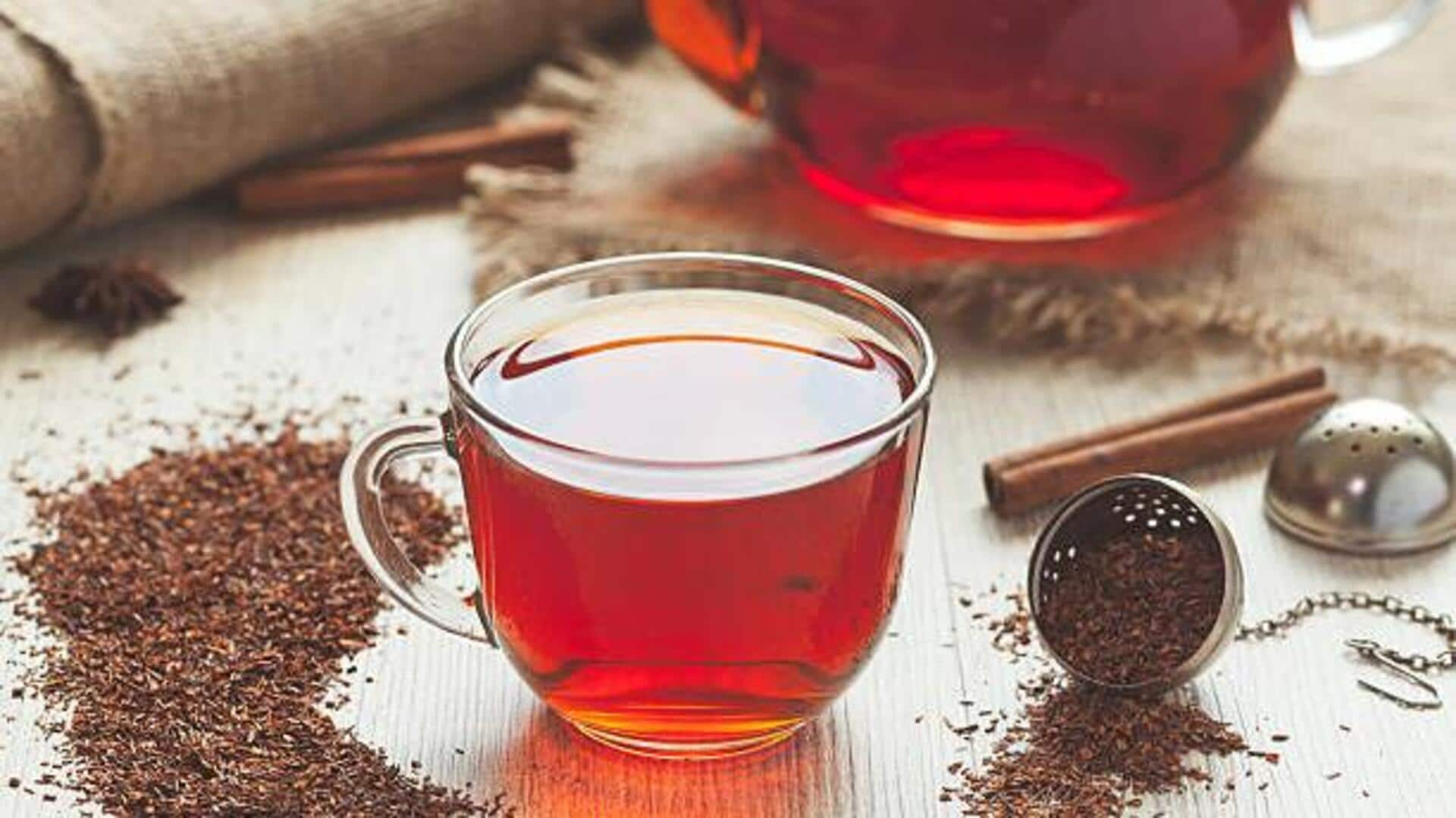
5 tea blends with indigenous ingredients
What's the story
African tea blends are popular for their unique flavors, often adding indigenous plant ingredients that provide unique tastes and health benefits. They highlight the continent's rich biodiversity and offer a peek into traditional practices. From aromatic herbs to nutrient-rich leaves, every blend narrates its story of origin. Here are five notable African tea blends with indigenous plant ingredients that have become popular for their uniqueness.
South African delight
Rooibos: The red bush tea
Rooibos, or red bush tea, hails from the Cederberg region of South Africa. The caffeine-free herbal tea is prepared from the leaves of the Aspalathus linearis plant. Naturally reddish-brown in color and sweet to taste, rooibos is loaded with antioxidants and has been associated with numerous health benefits. It is commonly consumed plain or with milk/sugar.
Southern treasure
Honeybush: Sweetness in every sip
Honeybush tea has its roots in the Cyclopia plant species of South Africa's Eastern Cape region. The name comes from its honey-like aroma when brewed. This caffeine-free herbal infusion is sweet with floral undertones. High in antioxidants and low in tannins, honeybush makes for a soothing beverage choice.
Tropical refreshment
Hibiscus: Vibrant floral infusion
Hibiscus tea is prepared from the dried petals of the Hibiscus sabdariffa flower, which is commonly found across West Africa. Known for its vibrant red color and tart flavor, hibiscus tea can be enjoyed hot or cold. It is packed with vitamin C and antioxidants that may promote heart health by helping lower blood pressure levels.
West African remedy
Kinkeliba: Traditional healing brew
Kinkeliba tea is derived from the leaves of the shrub Combretum micranthum, which grows in the Sahel region of West Africa. Traditionally, it has been consumed as a medicinal drink by local communities. Kinkeliba has an earthy flavor similar to that of green tea but is caffeine-free. It is believed to aid digestion and keep one hydrated in warm climates.
Aromatic experience
Lemongrass: Zesty herbal infusion
Lemongrass grows abundantly across tropical regions, including parts of East Africa such as Tanzania or Kenya. It is used both culinarily and medicinally due to its citrusy scent (similar to lemon zest) mixed with grassy notes. This makes for a refreshing infusion ideal for any time of day, especially after meals, owing to the digestive properties associated with this aromatic, herbaceous perennial grass species, Cymbopogon citratus.